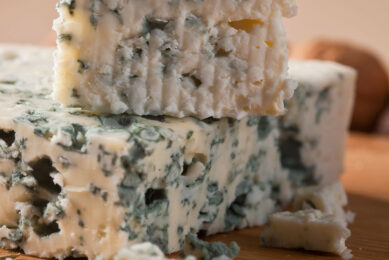Jump in global dairy prices, EU 2022 prices to rise

Global dairy prices are at their highest level since March 2014. A jump in prices erases the ground lost in the second December auction, Nathan Penny, Senior Agri Economist of Westpac New Zealand says.
Overall prices in the Global Dairy Trade (GDT) auction on 18 January lifted 4.6%, while key whole milk powder prices increased by 5.6%. Both cheddar and butter prices set record highs. The price strength was evident across the board.
Whole milk powder prices led the gains, while skim milk powder and butter prices also gained 5%. Anhydrous milk fat and cheddar prices posted more modest gains in the vicinity of 1%. The result was largely in line with expectations, Penny points out.
View here: Global market prices overview
The Westpac economist expects that weakness in New Zealand dairy production will further underpin global dairy prices at least in the short term. “After a run of cold and wet weather earlier in the season, dry weather is now compounding the weakness in New Zealand production. Fonterra lowered its milk collections forecast for the season by 1.6%. Recall that production in other key regions like the EU and the US is similarly sluggish.”
Additional supply growth
The strong result cements Westpac’s 2021-2022 farmgate milk price forecast at NZ$9.00 (US$5.89) per kg milk solids. “In the short term, the risks to our forecast are mostly on the upside,” Penny says. “For example, ongoing dry weather could put additional dents in New Zealand production and push prices higher again. Meanwhile, omicron-related supply chain issues could also lead prices higher.”
Rabobank’s latest Commodity Markets Research says global milk supply growth turned negative in the major exporting regions, and markets are expected to remain tight in the short term. “However, high global dairy commodity and milk prices will begin incentivising additional supply growth,” Rabobank says.
Although a rapid rise in milk prices might normally trigger a supply response, cost inflation will continue to give pause to expansion plans, while logistics and Covid-related staffing challenges at milk plants will limit milk buyers’ ability to take on additional milk. New Zealand milk production dropped sharply by 5% year-on-year in December amid wet weather. January was exceptionally hot with minimal rain.
View here: Global market prices overview
Milk yield improvement
Chinese import demand showed strong growth in 2021, Rabobank points out, though that strength slowed in the second half of the year. Imports into China were up by 16% year-on-year in 2021. Since September, however, imports have been down 3%. “The rate of China’s import growth should continue to be slow into 2022, particularly if prices remain high and stocks remain ample,” Rabobank indicates.
In the US, milk production growth turned negative late last year. Rising milk prices are stimulating production once again, but the US milk cow herd will remain below year-ago levels until the second half of 2022, Rabobank says.
December milk production in the US was down only slightly by 0.1% year-on-year but the lower cow numbers (down 67,000 from December 2020) mean production strength will rely on milk yield improvement in the short term.
Rabobank emphasises that strength in the butter and powder markets should push class IV milk prices above class III across 2022 in the US. Butter and non-fat dry milk prices have been pushed higher by improved demand at a time when output has been lower and stocks are being drawn down.
EU milk production
Eventually prices will likely subside from short-term spikes, Rabobank expects. “But markets should prepare for ongoing elevated prices compared to recent norms. Sustained periods of lower prices in recent years have been driven by rapid production growth in New Zealand or the removal of quotas in the EU, as well as heavy inventories overhanging markets. Today, however, inventories are low and supply limitations should tame production growth.”
According to the EU Agricultural Outlook 2021-31, the growth of EU milk production in the next decade will slow down to an average of +0.5% per year due to a decline in herds driven by sustainability objectives.
This year, dairy cow milk production will increase by 1.4%, compared to the 3-year average 2019-2021 and total 156 million tonnes. It should reach 158 million tonnes by 2025. The number of dairy cows is expected to decrease from 20 million heads in 2022 to 19.6 million in 2025.
EU dairy prices are expected to rise in 2022, driven by the high demand and the limited supply, a new report published by IndexBox says. The average cheese price will post the most noticeable gains, surging to US$3.23 (+5.1% compared to the 3-year average 2019-2021). Milk will be up to US$0.346 per kg (+0.6%). By 2025, cheese could reach US$3.30 per kg, and milk US$0.361 per kg. Butter prices will remain stable near $2.2 per kg throughout the next 5 years, the report says.
Join 13,000+ subscribers
Subscribe to our newsletter to stay updated about all the need-to-know content in the dairy sector, two times a week.










